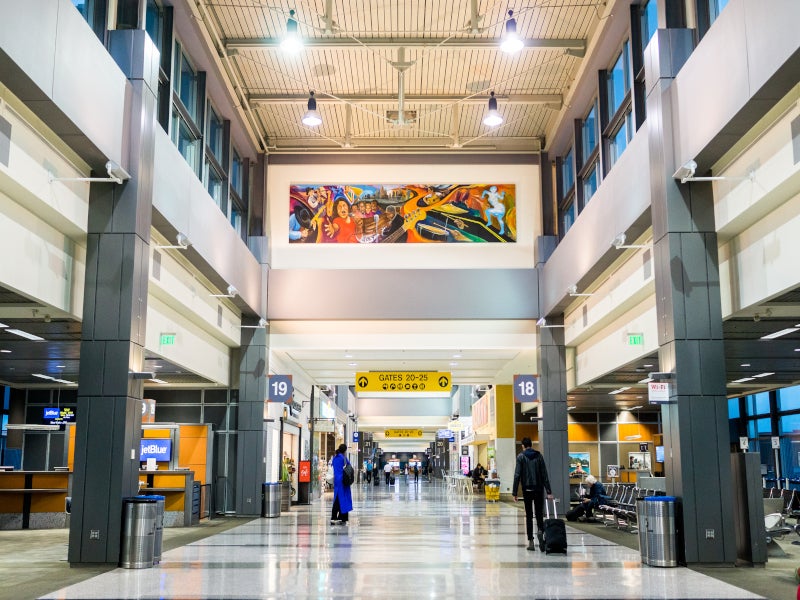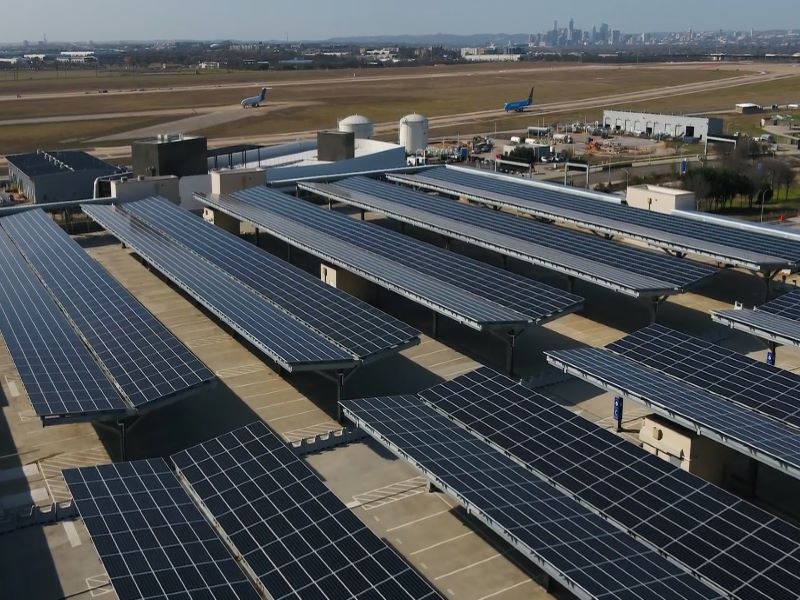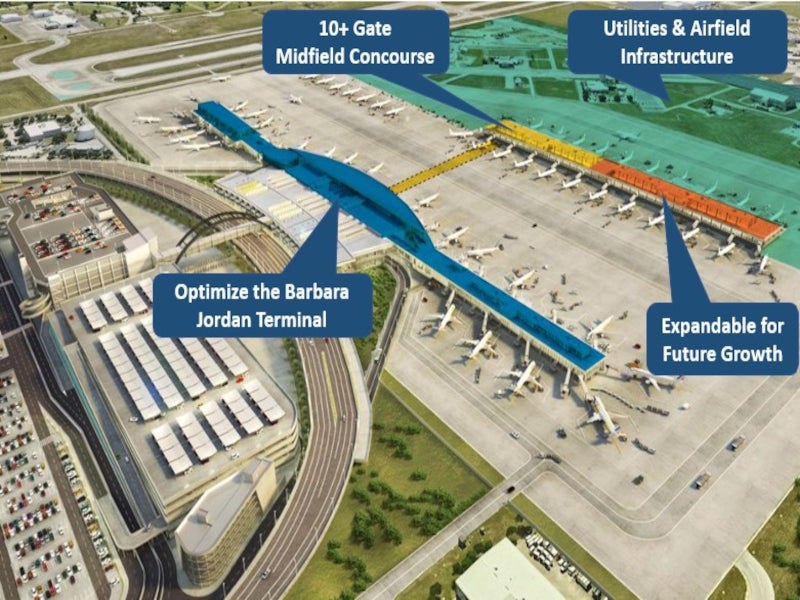The City of Austin Department of Aviation announced plans to expand Austin-Bergstrom International Airport (ABIA or AUS) located in Austin, Texas, US, in a phased manner under the Airport Expansion and Development Programme (AEDP) in July 2021.
Owned and operated by the City of Austin, the ABIA expansion will support the immediate traffic growth, improve passenger experience, and lay the foundation for long-term development.
Built in 1999, the airport spans across 4,242 acres with two parallel runways and 25 gates designed to serve 11 million passengers a year. The AEDP is a part of the 2040 Master Plan that aims to prepare the airport for serving more than 31 million passengers annually by 2040. The programme will support Austin’s economy and provide opportunities for small and local businesses.
Austin-Bergstrom International Airport’s expansion plan
The AEDP at the state-of-the-art AUS airport will include the optimisation of the Barbara Jordan Terminal and the addition of a new Midfield Concourse with more than ten new gates and two new taxiways, as well as a new $77.6m baggage handling system.
The optimisation of the existing terminal will involve the reopening of a security checkpoint on the east side of the atrium, the opening of new ticket counters and a new checked bag screening system. The expansion of the terminal with new gates to handle departures from Austin is also being planned.
The development of the new Midfield Concourse B facility will require relocation of the existing midfield taxiways, which in turn, will require the closure and removal of the LoneStar Airport Holdings-operated South Terminal facility within the next two years. All the operations carried out from the South Terminal will be accommodated at the Barbara Jordan Terminal.
Additionally, the programme will facilitate utilities and airfield infrastructure work to accommodate the new Central Utility Plant and the removal of existing structures to prepare for construction work.
The programme will be funded through airport cash reserves, current and future airport revenues, future revenue bond proceeds and Federal Aviation Administration grants.
Improved and sustainable features of the airport
ABIA, in collaboration with Austin Energy has constructed a solar panel array with 6,642 solar panels on the top floor of the Blue Garage at the airport campus. The array will produce 1.8MW electricity, of which 1.5MW will be supplied to the Utility’s Community Solar Programme and 0.3MW energy will power the airport’s administration building and future construction projects.
The airport initiated transitioning to renewable natural gas in January 2020, with the support of its long-time partner Clean Energy, a natural gas fuel provider for transportation in North America. Clean Energy supplies its Redeem™ brand of renewable natural gas (RNG) to the airport, which is the first commercially available vehicle fuel made entirely from 100% organic waste. About 50% of the airport shuttle bus fleet uses RNG, which will reduce the airport’s carbon footprint by approximately 20% at no extra charge.
The airport has also achieved level 2 Carbon Accreditation in the Airports Council International’s programme.
In April 2021, the airport launched LocusMaps, a new wayfinding platform, in partnership with LocusLabs to provide real-time information to the passengers, such as the parking garage locations, latest pandemic protocols, shop and restaurants guides, changed gate assignments and nearest available restroom location.
Austin-Bergstrom International Airport background
Constructed on the site of Bergstrom American Air Force base, AUS Airport is named after Captain John August Earl Bergstrom. The airport replaced Robert Mueller Municipal Airport as Austin’s main airport in 1999.
The AUS airport is the second-fastest-growing mid-sized airport in the US and the third busiest airport in Texas.
As a major economic driver in Central Texas, the airport provides more than 74,000 direct and indirect employment in the Central Texas area. Austin-Bergstrom is widely recognised for its reflection of local food, music, art, and customer service.








